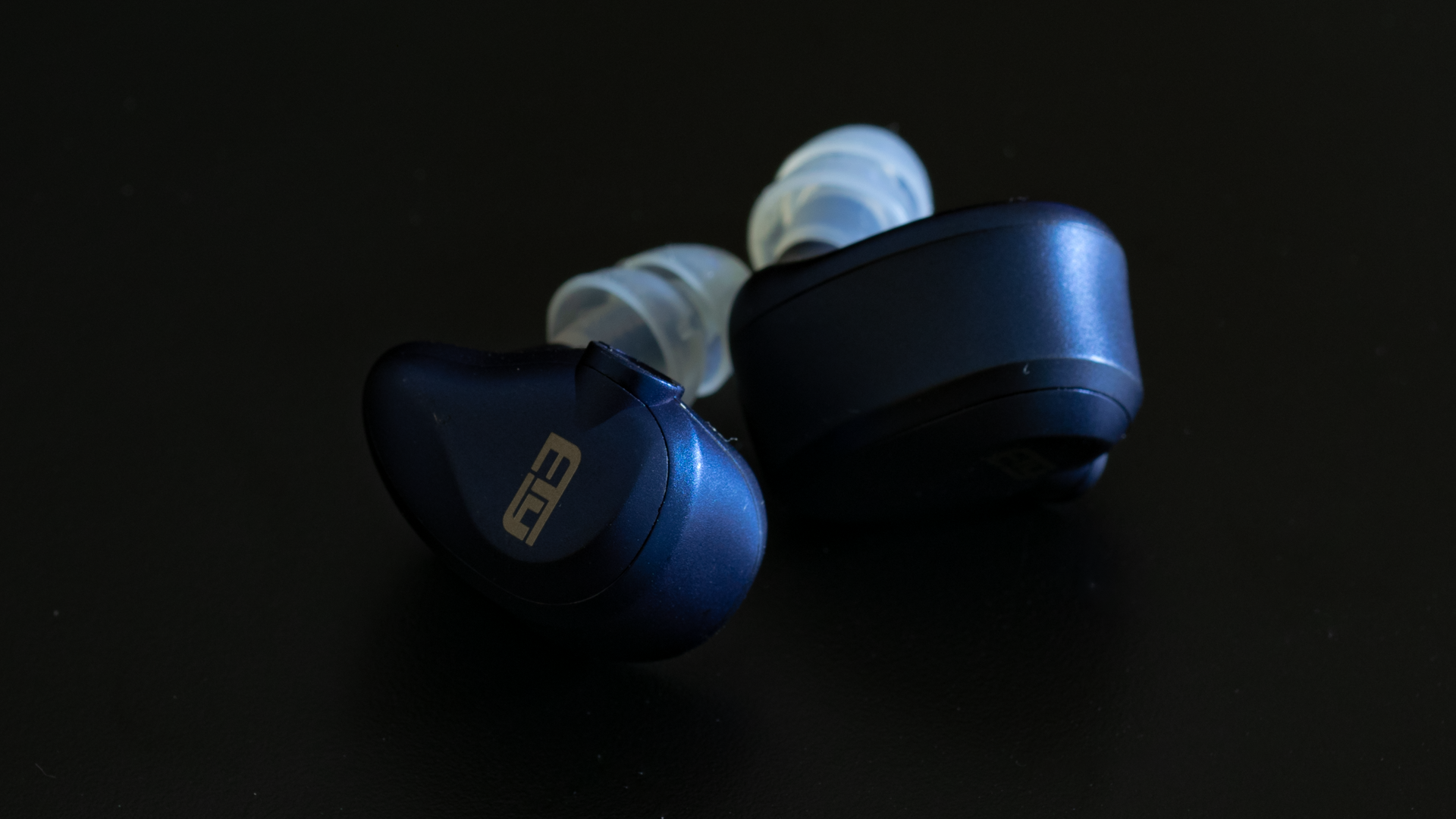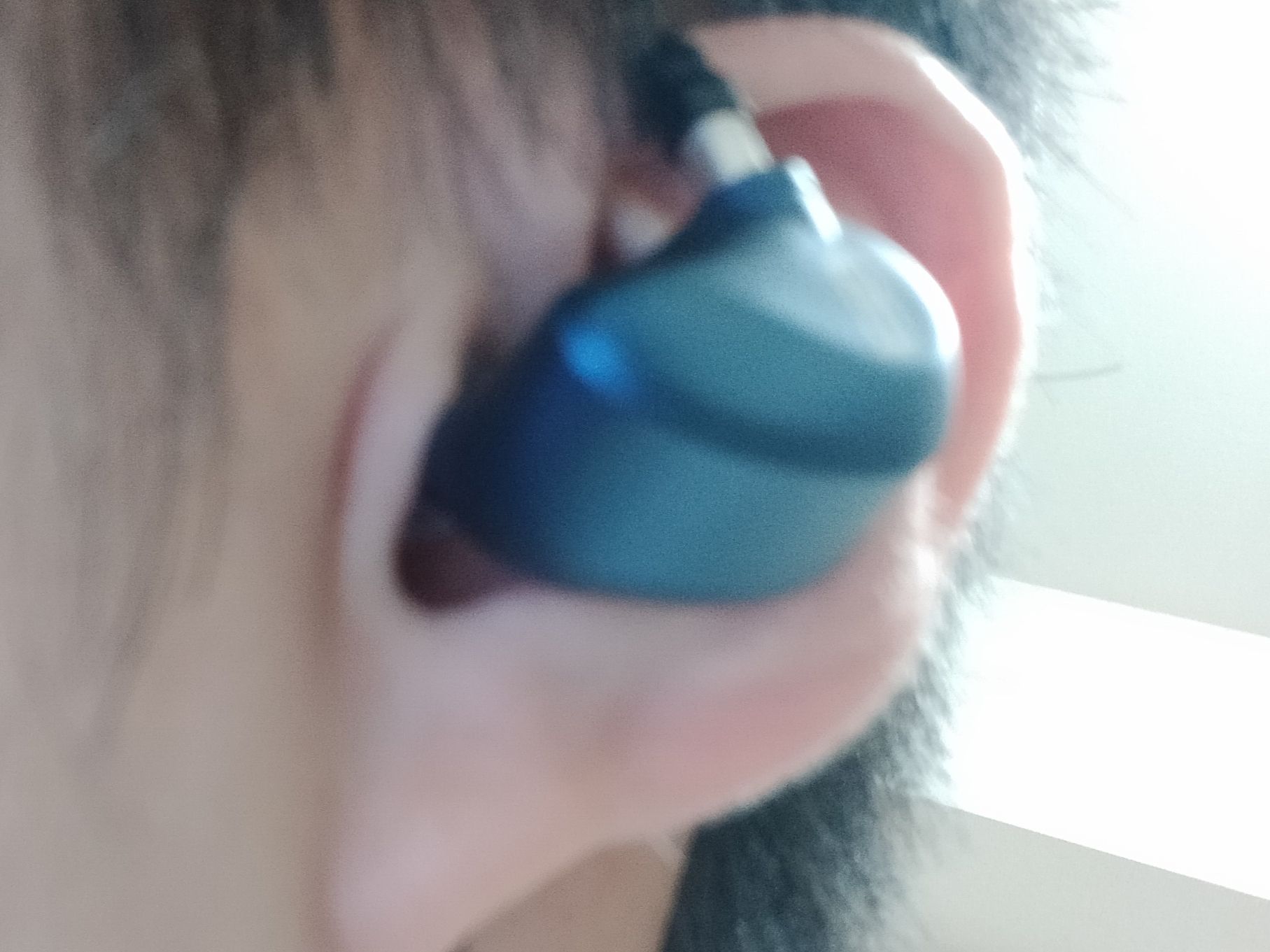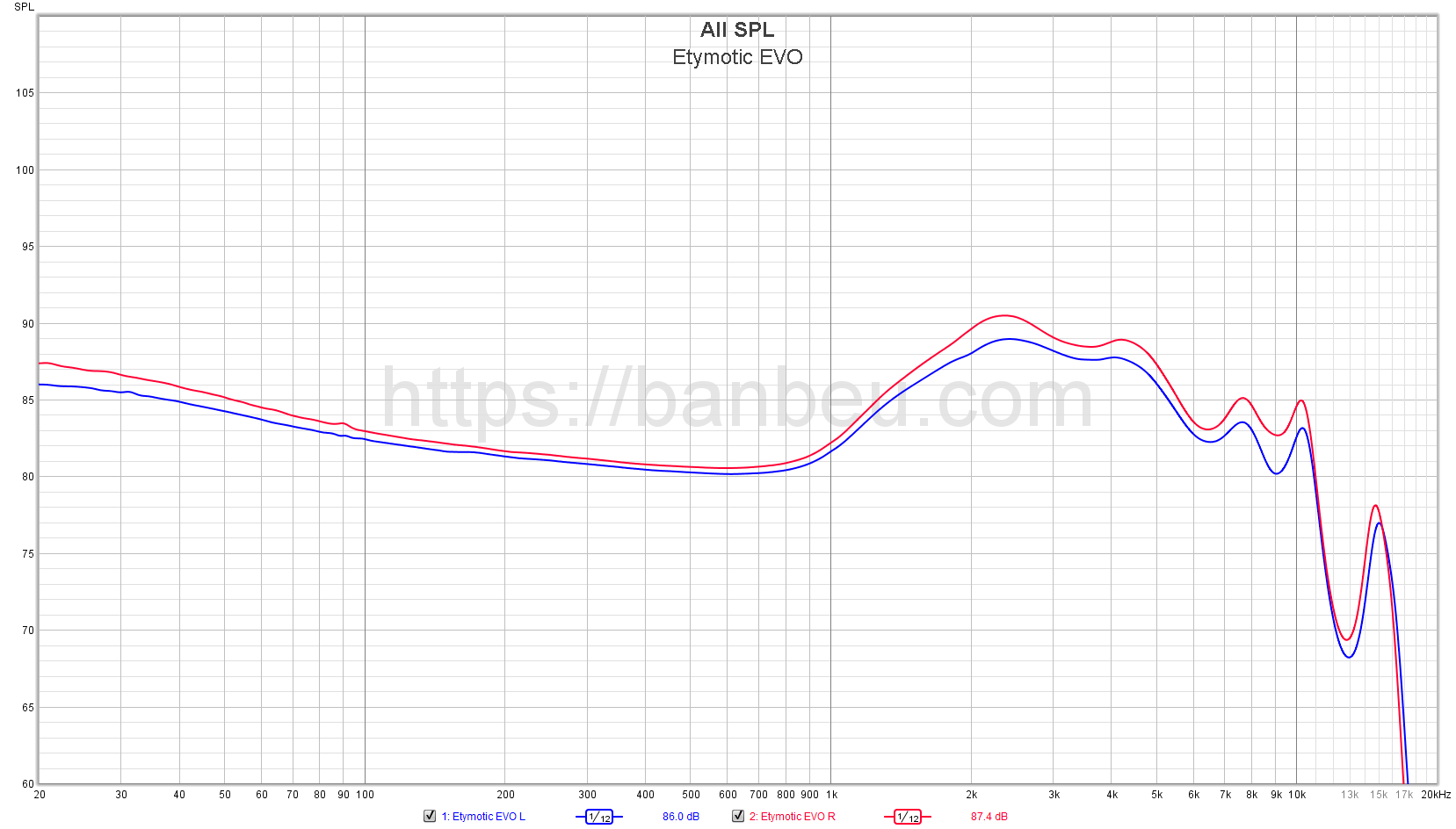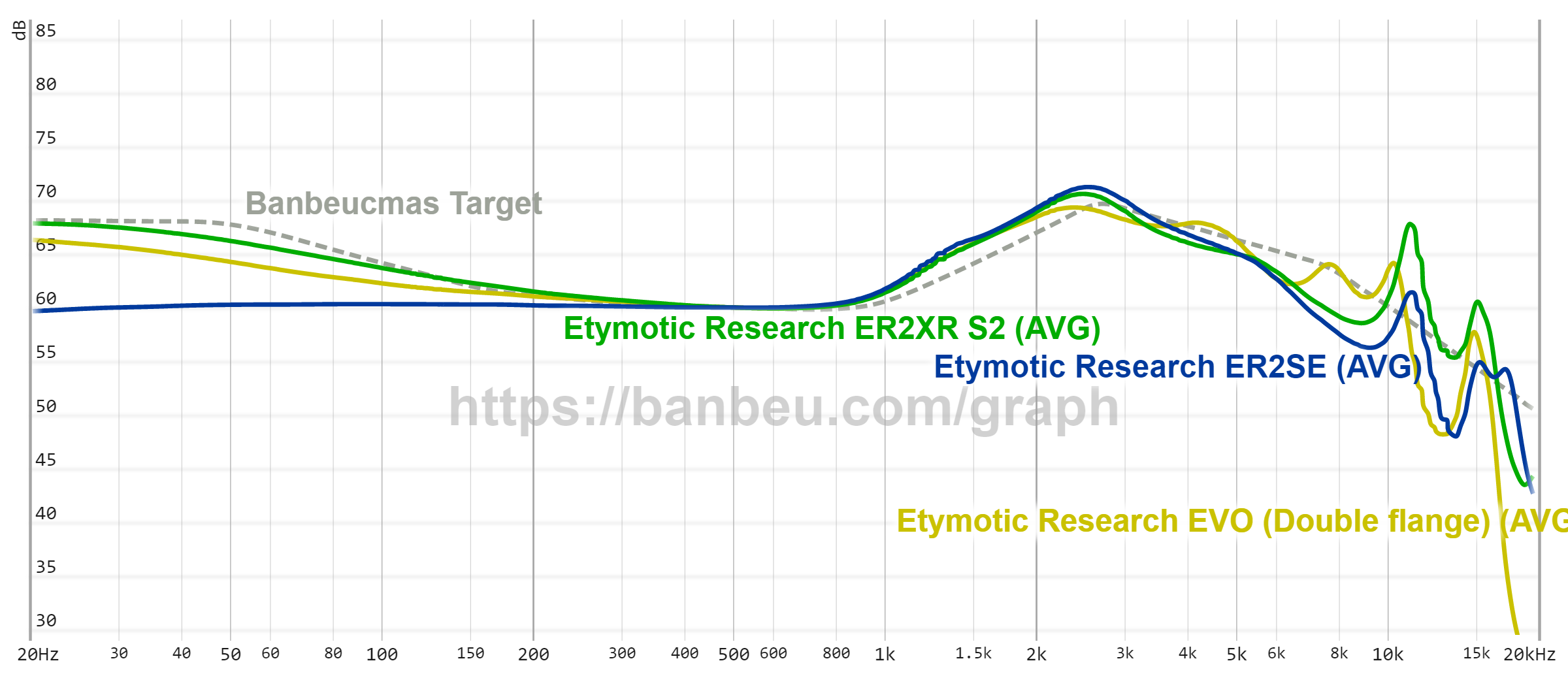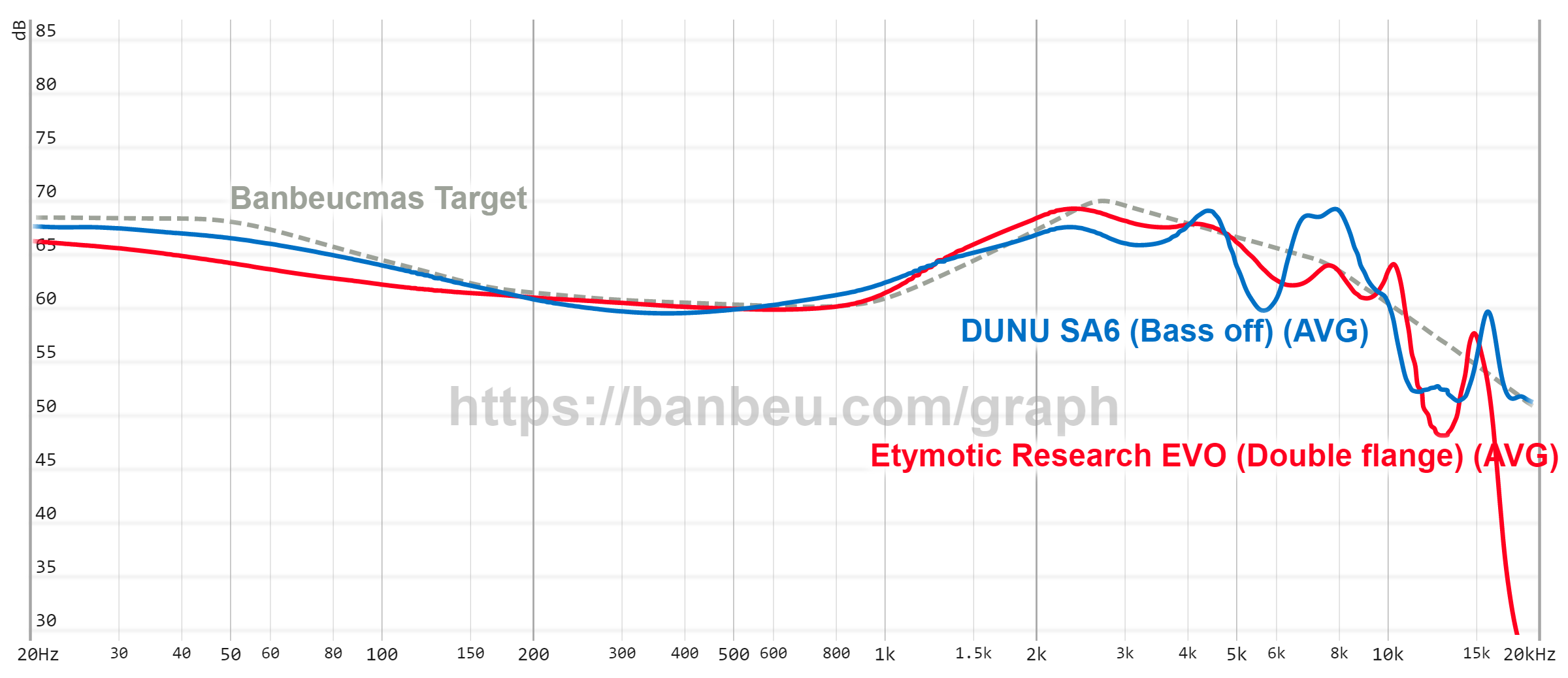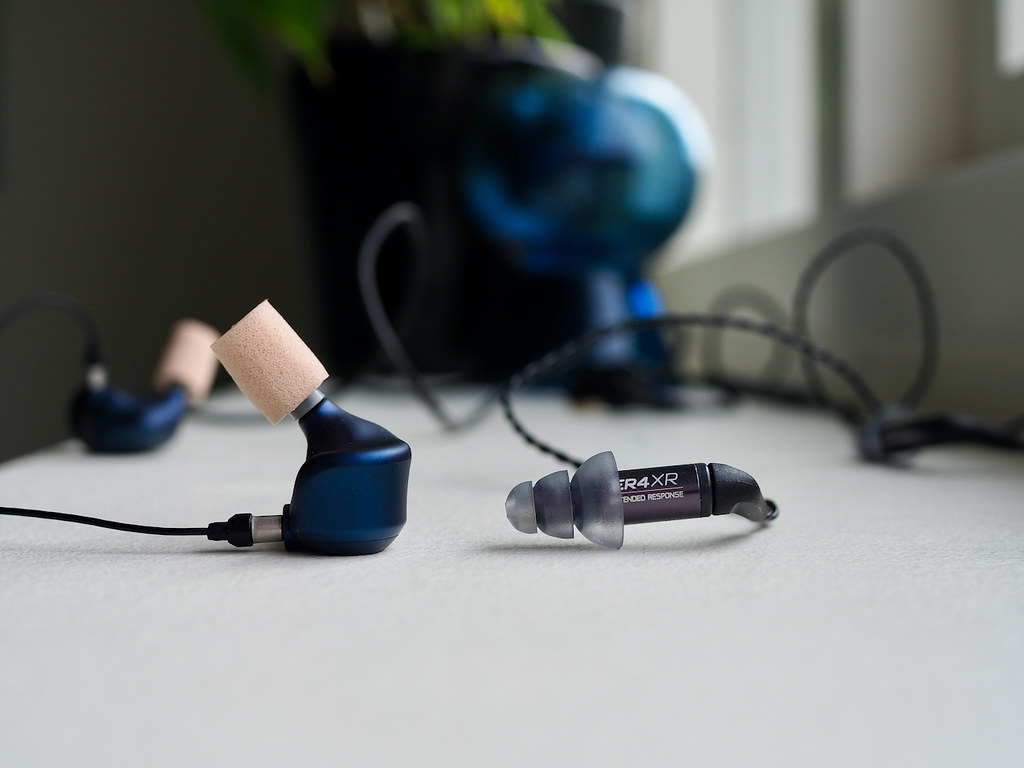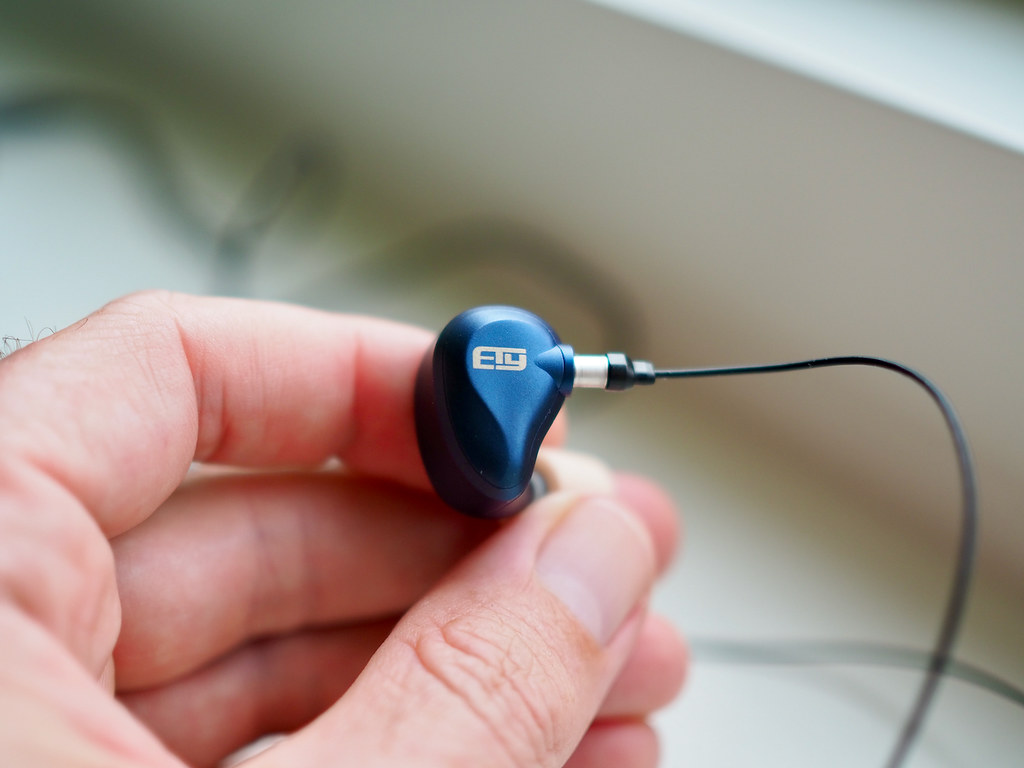This was unexpected coming from them. Though now that I think about it, this should have happened sooner or later.
Etymotic, a brand whose age is nearly double the time that I spent on this earth. Though still relevant in the scene thanks to their iconic ER4 series as well as good audio quality. Personally, I own an ER4S in my collection and I know a handful of users (from the industry and enthusiastic scene alike) using Etymotic IEMs daily.
Through the EVO release, it's quite clear how Etymotic is trying to achieve. A pseudo-custom IEM with Multi-BA setup. While these aren't new in the current scene where you would have people shoving as much as
twenty-four BA drivers into a single shell. A company like Etymotic doing this for the first time does garner some attention.
Let's find out how far the first step of a respected veteran in the scene can go, shall we?
This review is a copy-paste from my blog, you can check it for more information: https://banbeu.com/etymotic-evo-review-classic-in-evolution/
Information:
The Etymotic EVO is provided from Etymotic through their World Tour
Build and Accessories:
- Double Flange tips (S/M/L/XL)
- Soft pouch
- Hard case
- 3.5mm unbalanced estron T2 Cable
- The IEM itself
Disclaimer: The unit I received isn't a final packaging of the product. Be aware what you buy might be different from what I receive.
Etymotic have been quite nice with the accessories set in recent days. The ER2XR, for example, is still quite solid in their packaging as a whole, not as flashy for sure, but everything provided does give you a decent to good experience compared to a lot of Chifi offerings.
For the EVO, I do have a few concerns, however. Don't get me wrong; the case and pouch in this tour unit are quite nice. The former is quite solid, nice to hold, and they even have a premade foam placeholder for you to put the IEM in which is neat. The pouch itself has a nice texture on the surface while being large also.
But the cable? Oh boy, this is another story.
Usually, when it comes to cables, the worst I think can happen is one can provide something too thick or too heavy. But the Etymotic EVO is the opposite of that: It's thin and light in a very literal sense - the thing is thinner than almost any type of cable I have seen out of the box from an IEM package.
This does solve some of the problems people experiences, such as discomfort or the cable being prone to microphonic though in exchange for some newly created problem:
- When it's tangled, it's slightly harder to untangle: Yes, I won't deny that the cable itself has some stiffness so at least it's not gonna end up in some sort of mumbo jumbo when you try to pull it out. But, the thin cable does make it a bit troublesome when you actually have to untangle it.
- It looks so thin that one might worry it's going to break: Which might not be true despite how it looks, but still a concern, especially as it looks like a spaghetti noodle being stretched vertically.
Don't get me wrong, I can sort of understand the idea behind this cable here (especially when you look at the IEM build itself), but this doesn't excuse it of any potential problems. At least I can give some praise to the cable termination they have used here.
I am not sure if this is purely MMCX or a custom version of it, because my experience of it seems to be closer to Acoustune's PentaconnEar connection, which
I do have some praise of before.
In any case whatsoever, don't take my entire word for it being MMCX or not, I haven't tested its compatibility with other MMCX cable I have in hand.
Now moving to the EVO itself. Etymotic has been quite famous (or infamous, depending on who you ask) about their fitting. So this isn't a surprise.
I mean... it's Etymotic... you don't see Etymotic without deep fitting the IEM into the bottom of your earhole abyss.
The EVO has all of the classic features you see in a typical Etymotic IEM but in a pseudo-custom shell. This can either be a blessing or a curse though I think people who have regular to big ears shouldn't have much of a concern.
Though for people who have shallow earholes specifically... Let me provide an image of horror that can be some sort of amusement for you readers.
For your information, this is on the smallest double-flange ear tip which was provided. Yet the thing sticks out like how I wear an IER-Z1R. Moreover, I don't even feel any stretching sense on this IEM like other pseudo-custom IEMs. In other words, the nozzle was even longer than my ear canals themselves so much so the IEM refused to fit in my concha
Wait, do you actually have a seal on this?
Yes, yes, thanks for your own concern, I am good on this.
The Etymotic fit lives up to its name by going to the depth of my ears and causing a lot of suction when I pull it out. This in turn, gave a better bass response and Etymotic level of Isolation, but the solid metal build does have its own problem. Due to its weight and how it is sticking out of my ear, weight distribution isn't the best. Hence, I have to tighten up the chin-slider tighter required compared to other IEMs (even the IER-Z1R don't get to this point) in hopes of it remaining in my ears while commuting.
So... take this experience how as you will though in a nutshell for people who have known about Etymotic for a while now.
This is still a classic Ety experience, don't you think?
Sound Analysis:
Since this is Etymotic we are talking about, it's quite obvious that the EVO will be tuned in accordance with their in-house Diffuse Field deviation. Though Warm Diffuse Field will be more accurate in this case considering the bass and lower-mid boost of this IEM.
Tuning decision-wise, while no doubt Etymotic style is a charm to some objectivists out there, my preference is on the fence. It surely doesn't take long for me to get used to it for sure, but that slight honkiness does get mildly infuriating every time I tried an Etymotic IEM or any others that follow this methodology closely
EVO thankfully is quite warm, however. Hence, in terms of midrange, I am quite satisfied to recommend this set for someone who might like listening to female vocalists -
a notable bias metric for me to judge for sure, but still a recommendation nonetheless.
Put that aside though, the main attention of the EVO this time around is supplied on two fronts:
- It's the first major release of an Etymotic IEM in Psuedo-custom IEM form.
- It is also a multi-BA IEM.
Though I am more interested in the second portion overall, the fact that the EVO is a multi-BA set does pose some questions regarding coherency and whatnot. Though after days of using this IEM the answer is quite assuring: in short, the EVO is quite coherent. Detail retrieval is nothing sort of good also. Seems like even with something this new, I can still consider the EVO as a benchmark in the mid-fi range when needed.
Though the most positive aspect I can see out of the EVO is in its soundstage presentation. Yes, the isolation is still there, and the EVO won't get to a state of spaciousness like some of the sets I have ever tried. But this is way better than past Etymotic experiences thanks to the instrument layering. I am glad Etymotic has graduated from its classic staging experience.
That said, the applause stops here, here comes the mixed part.
Since we are still on the topic of the EVO's technicality, then let's move on to its timbre.
Given the traditions of Etymotic IEM BA sets' plasticky timbre, the EVO unfortunately (and expectedly) retains this characteristic. The whole sound spectrum seems to be coated with a sense of weightlessness thanks to the quick decay in the transients of the midrange and bass. Hence, this results in a sensation where you can notice the presence of the instruments but at the same time, cannot feel them.
Though in my opinion, the bass range is the most noticeable section thanks to this flaw. The bass is tight and quick for sure, but the impact is lacking a lot. Drums are the obvious victim of this characteristic. In a sense, a hit on the bass drum feels like the drummer is plucking a string instead (Yes, this is not a one-to-one comparison, but hopefully you can see where I am coming from). Sub-bass extension is not bad. While it's not the "deepest reaching" bass, the rumbles are there and can be quite satisfying thanks to the quick attack. Though, I will leave it to you readers to decide if this outweighs the flaws.
That said, be warned. This is far from an IEM that I would call as "at least acceptable" for bass-head. If I am recommending an Etymotic IEM based on this citeria, I might as well tell you to get the ER2XR instead.
Want to know more info? Read the comparison section then.
Treble on the EVO on the other hand is even more mixed. Saying it is dead would be too much criticism for it. Admittedly, there are surely some flaws, though I am not sure if I would necessarily call these "flaws".
Description-wise, the first apparent characteristic I have to mention is how dark the EVO treble is. While it does retain some sparkles when it comes to cymbal/hi-hat presentation, the shimmering does decay too fast for me, unfortunately. This makes the EVO not the ideal choice for J-Pop or energetic genres, though I would dub this more as passable.
Whatever it is, while not completely solving the issue, this thankfully made the EVO less "dry" sounding and made the experience less polarizing overall. It's even to the point where I would recommend the IEM for someone who wants a smooth and inoffensive experience. Might not be the best bet, but it's worth considering.
Comparisons:
vs Etymotic ER4S:
While a lot of companies have their ups and downs in terms of sound quality over time. With the age of the ER4S which has now been "replaced" by the ER4XR/SR, I won't be surprised if the EVO takes the crown here.
And in fact, to no one's surprise, it is. The EVO presented itself to have better imaging and delivered a timbre that is more organic in comparison. And if anything, the change in timbre qualities is more significant when moving from the ER4S to the EVO: Lots of instruments seemingly have more weight to them.
It goes without saying that I perceive the ER4S as the drier IEM. A couple of factors might be contributing to this. Maybe the EVO has more treble extension, maybe the EVO is warmer...
Every theory might hold true with how I have perceived the EVO here.
In addition, you can unironically call the EVO being the more technical IEM also. With respect to the resolution of both, the EVO simply just takes the cake here.
vs Etymotic ER2XR/SE:
Here is a comparison that might be more realistic to someone who is using the review as a guide. After all, by the time of this writing, the ER2XR/SE is still one of the latest releases from Ety. And boi, getting these IEM during price drop sure is a treat for some.
Now, if I had to choose which one out of the ER2 pair has a closer experience to the EVO here, then it's a hard choice actually.
Yes, graph wise I would consider picking the ER2XR due to both having a noticeable bass boost, but here is the thing: I consider impact is a slightly different thing from just having a lot of SPL boost in certain frequencies. Though this doesn't entirely mean there is no correlation between the two.
What does this mean exactly?
If you have realized that the topic of timbre and transients is a recurring theme in this review, then you might have a clue of what I am going to say here.
Despite the EVO having some boost in the bass, it feels as if there is none like the ER2SE is. At the very least, the SR do feel "fuller" if you want a linear response from the bass to the midrange, though the entire idea hasn't changed. Both provide less impact compared to the XR though for two different reasons. For the EVO, it's in the timbre of the bass range, for the SE, it just simply have more boost in the region.
Then, what's make deciding EVO and ER2XR made this a "hard choice" like you said above.
Let's move into the midrange then. The ER2XR is warmer than the SR, and EVO is somewhat like that. Though with how the ER2XR performs, I would argue that it is the warmest (and bassiest) IEM in this comparison.
That said, this is as much as I can provide on individual differences. Both the 2SR and 2XR do have their own charm as 2 respectable DD pairs so for a user who is looking for an organic experience from Etymotic, these are the ones to go with. But for someone who is already an owner of one of these two and is looking for an upgrade.
Just make sure that you would trade the timbre performance for something that is more detailed, have better treble extensions, and better staging.
And possibly better fit, though if you read the build section above, I am not so sure of this claim :/
vs DUNU SA6:
Ah yes, the SA6, if there is one IEM that DUNU has released recently that I have been recommending on and off, then this is the one.
For a pure BA configuration, the SA6 simply does a lot of rights: great coherency, a bass response that is unexpectedly good despite still having some BA characteristics.
Enough with that, let's get to the chase.
Let's begin this comparison by me claiming that the SA6 has more "clarity" than the Etymotic EVO. Yes, the treble presentation of the SA6 is the reason here. It's quite upfront in the mid/low treble region thanks to the peaks around this range. Comparing that to the gradual roll-off of Etymotic EVO, not to mention that you would have to deep fit this anyway, it's a much more "pleasant" experience.
That said, I am not sure what to pick here actually. The SA6 bass response and clarity do support the idea of a better bet if you are looking for a fun, pure Multi-BA set that is also decent with its timbre response. The EVO, however, would fit for a neutral response with some small spices (like a bit of subbass boost) here and there. I would pick it for female vocalists also - it's just simply more forward and I get more enjoyment in this way.
Pick your poison, both are solid choices in my eyes. The best way I would recommend is that you should consider your music taste and pick one accordingly
vs Sony IER-M7:
Etymotic EVO vs Sony IER-M7 - Comparison graph was generated from the
Graph Comparison Tool
This might be a bit unfair in terms of pricing if you consider that the M7 has been out of the market for a while. Though putting these two IEMs together, then I see some nice relationships between the two. Namely, both might be considered as unimpressive, though in different ways.
The EVO is unimpressive due to how nearly neutral it sound, now I do take a lot of joy out of a neutral (or nearly neutral) listening session, so this is more like a me problem, though Etymotic IEMs do have a handful of people calling their lineup "boring" in sound presentation. This isn't a bad thing in itself, just my observation overall.
The M7 though... The poor child usually gets neglected for something like the M9 (Or they go straight to Z1R) despite being a decent IEM on its own, guess that's how overshadowed it is. To put a nail in the coffin, my M7 impression is... boring.
No, not the type of boring because of deadly neutral or something, the M7 has a nice coloration in the midrange, with a treble zing of the end of the spectrum (It's actually well-executed actually). Though in all consideration, I just found the IEM lacks any "wow" factor for me. Still, a relatively safe option considering its price.
That said, if I am going to give my take on which IEM I might recommend more here, I would give it for the M7. It has better detail retrieval though it just put the EVO behind if we are mentioning its imaging. The timbre is also more pleasant to enjoy also.
Though in all fairness, there is some incoherency in the sound spectrum of the M7, the slight bloat doesn't help either so at least the EVO does have that as a leverage to the IER-M7.
Though if you look at another perspective, you can possibly treat the situation of the IER-M7 to the EVO like the DUNU SA6 is. Though the IER-M7 would be what I see as the safest option between the trio due to its pleasant sound representation (It's ironically would serve as a boring mix between SA6 and EVO now that I think about it).
Though in all honesty, every conversation I see that involves M7 often ends up with the IER-M9 or its flagship, though the liability of that should only lies in whether you really want to upgrade.
Praising much? Probably. The Sony IER-M7 just sounds underrated for me because of these reasons.
Conclusion:
The EVO marks the first time Etymotic actually went of their usual safe place in the Audio scene, while still keeping their own classic taste they have had over the year. Much to the pleasure and dismay of the fans, it's something that does have some tough competition nowadays but remains as a good IEM overall.
I have no qualm about bringing this IEM into a conversation as the EVO itself, is a solid IEM.
But with the competition, I will (hold back) from fully recommending this IEM on a pure sound basis, especially since ER4XR/SR is still a thing (And might provide almost what the EVO has achieved).
Still, feel free to consider it as an upgrade from the usual Etymotic, it does have its justification of being better than the usual line-up overall.











